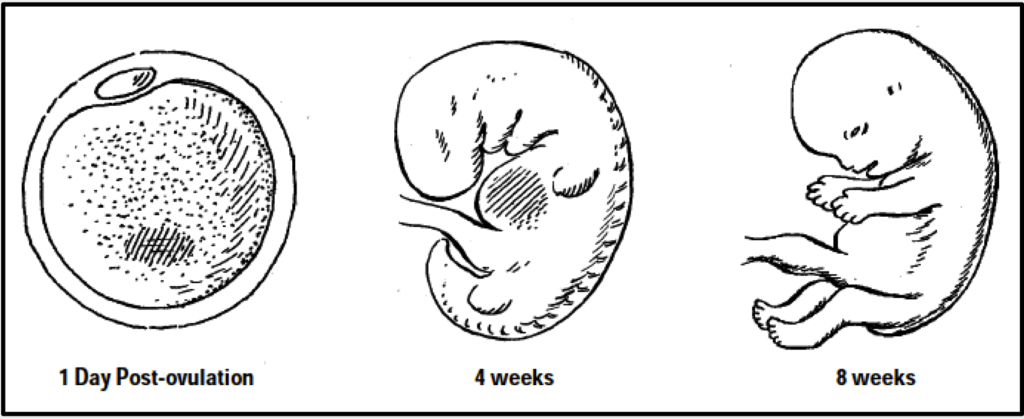Introduction
Sexual reproduction was an early evolutionary innovation after the appearance of eukaryotic cells. It appears to have been very successful because most eukaryotes are able to reproduce sexually, and in many animals, it is the only mode of reproduction. And yet, scientists recognize some real disadvantages to sexual reproduction.
On the surface, creating offspring that are genetic clones of the parent appears to be a better system. If the parent organism is successfully occupying a habitat, offspring with the same traits would be similarly successful. There is also the obvious benefit to an organism that can produce offspring whenever circumstances are favorable by asexual budding, fragmentation, or asexual eggs. These methods of reproduction do not require another organism of the opposite sex. Indeed, some organisms that lead a solitary lifestyle have retained the ability to reproduce asexually. In addition, in asexual populations, every individual is capable of reproduction. In sexual populations, the males are not producing the offspring themselves, so in theory an asexual population could grow twice as fast.
However, multicellular organisms that exclusively depend on asexual reproduction are exceedingly rare. Why is sexuality (and meiosis) so common? This is one of the important questions in biology and has been the focus of much research beginning in the latter half of the twentieth century. There are several possible explanations, one of which is that the variation that sexual reproduction creates among offspring is very important to the survival and reproduction of the population. Thus, on average, a sexually reproducing population will leave more descendants than an otherwise similar asexually reproducing population. The only source of variation in asexual organisms is mutation. This is the ultimate source of variation in sexual organisms, but in addition, those different mutations are continually reshuffled from one generation to the next when different parents combine their unique genomes and the genes are mixed into different combinations by crossovers during prophase I and random assortment at metaphase I.
Gestation
Gestation refers to the developmental period that takes place while an embryo is developing in the womb. Also called pregnancy, in humans this period takes approximately 40 weeks, although it can last anywhere between 36 and 42 weeks after fertilization and still be considered within the “normal” timeframe. We break this gestational period down further into three trimesters, to more easily categorize the developmental stages that happen throughout the process.

First Trimester: An egg becomes fertilized when a sperm penetrates it, creating a zygote. Embryonic development begins with simple cell division and proceeds through cell differentiation, morphogenesis (formation of body structures), and growth. For the first eight weeks, the developing baby is called an embryo, and looks like a tadpole. At about three weeks, the neural tube, which becomes the brain and spinal cord, is forming. At about four weeks, the heart begins to pump blood. Tiny limb buds appear, ankles and wrists are formed, and fingers and toes develop. During the first trimester, which lasts up to 10 weeks, all major body organs and systems are formed but not completely developed. This is a critical period for development of the heart, central nervous system, upper and lower limbs, eyes and ears, teeth and palate, and most organs. Any damage at this stage can result in major damage or deformity. At eight weeks, when most organs have formed, the embryo is called a fetus.
Second Trimester: The fetus moves, kicks, swallows, and can hear the mother’s voice. It begins to wake and sleep at regular intervals. The skin changes from a transparent pink to a wrinkled red, and is covered with soft, fine hair. By the end of the fourth month, the central nervous system is past its most vulnerable stage. As its development continues, though, it remains susceptible to functional defects throughout pregnancy. The eyes, teeth, and external genitalia continue to be susceptible to functional defects and lesser deformities throughout the second trimester, which lasts until about Week 30.
Third Trimester: Body growth slows down, while brain growth continues and the head grows larger during the third trimester. The fetus begins developing its own immune system. Rapid brain growth continues. The fetus can open and close its eyes, suck its thumb, kick, stretch, and cry. It responds to light and sound and, if born as early as the seventh month, would have a good chance of surviving.
Why Sex?
Now, watch a film that explores the evolutionary benefits of sexual reproduction. During the film please write down the answers to the questions in the attached worksheet. You will submit this before your lab section meets, instead of completing a quiz:
- What is special about the lizards being rounded up in Texas?
- Name three drawbacks to sexual reproduction:
- Which fish had more parasites?
- Why are the sexual fish considered a harder target for the parasites?
- What happened to the sexual fish after many died from drought?
- What happened to the sexual fish once new minnows were added to the pool?
- Why do females produce few eggs?
- What are 3 problems caused by a peacock’s large tail?
- What are two traits that peahens look for in peacocks?
- What advantage does monogamy give females?
- What advantage does monogamy give males?
- What is the major difference between chimpanzees and bonobos?
- Why do female chimpanzees mate with as many males as possible?
- How are female bonobos different from female chimps?
- According to the study, what do females look for in a short-term mate?
- What seems to influence what features a female finds more attractive?
- Why, according to the narrator, are humans unique?
Lab worksheet:
If your lab section did not complete the nutrition activity last week, the version of the worksheet below includes the section on nutrition: